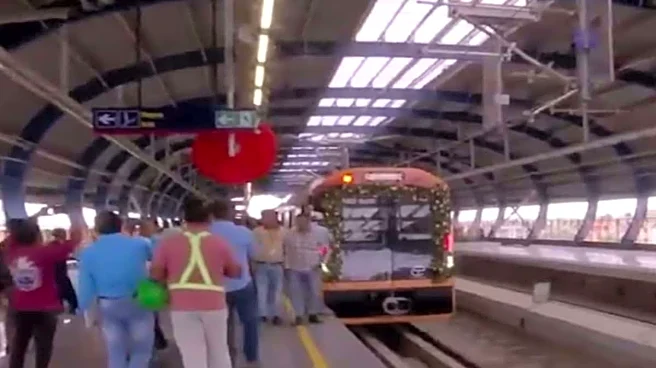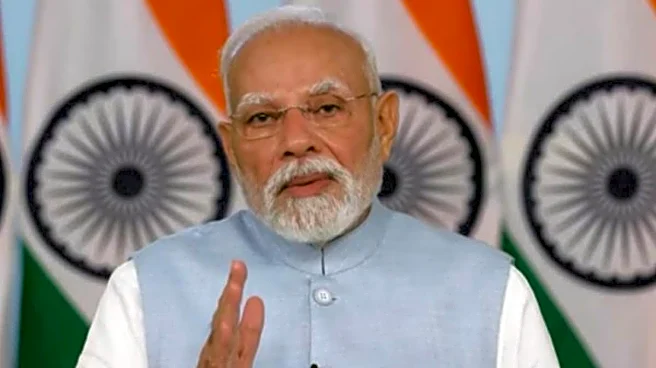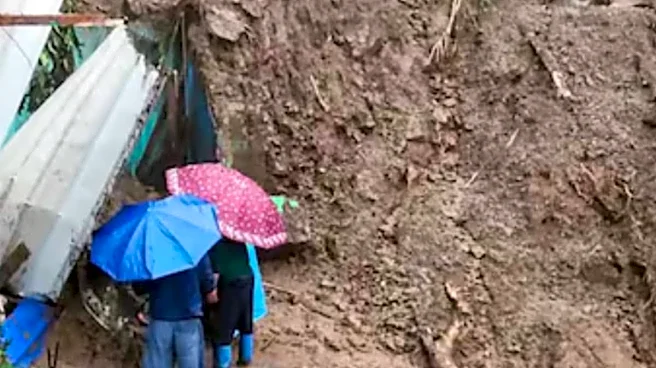Ahead of the assembly elections, Bihar Chief Minister Nitish Kumar on Monday inaugurated the first phase of the Patna Metro Rail Project, marking a major milestone in the state’s urban infrastructure. The inaugural 3.6-kilometre elevated stretch, part of the Blue Line’s priority corridor, connects the Inter-State Bus Terminal (ISBT) to Bhoothnath, symbolising the city’s long-awaited entry into India’s growing metro network.
Deputy Chief Ministers Samrat Choudhary and Vijay Kumar Sinha were also present at the launch ceremony, with metro rides for passengers set to begin from Tuesday.
Route and stations
The inaugural run of the Patna Metro covers three key stations – ISBT, Zero Mile, and Bhoothnath Road. Once fully operational, the Blue Line (North–South Corridor)
will stretch 16.2 kilometres, linking Patna Junction with New ISBT through a total of 12 stations, including Gandhi Maidan, PMCH, Rajendra Nagar, and Khemni Chak.
Nitish Kumar also laid the foundation stone for six underground stations, including Patna Junction, and a 9.35-kilometre tunnel, which will form part of the later construction phases.
Capacity, timings and fares
Each Patna Metro train comprises three coaches, with seating for 138 passengers and standing room for 945, allowing for smooth travel even during peak hours. For now, trains will operate every 20 minutes, between 8 am and 10 pm.
The fare structure has been set between Rs 15 and Rs 30, a ride from ISBT to Zero Mile will cost Rs 15, while the full route to Bhoothnath is priced at Rs 30. With 40 to 42 trips planned daily, the system aims to significantly reduce congestion and improve urban mobility in the capital.
Designed with passenger safety and comfort in mind, each coach is fitted with 360-degree CCTV cameras, emergency buttons, communication microphones, and charging points. The interiors feature Madhubani artwork and motifs of Patna landmarks such as the Golghar and Mahavir Mandir, reflecting Bihar’s cultural identity.
Stations are equipped with escalators, lifts, platform screen doors, digital displays, and ticket-vending machines, ensuring full accessibility. Security will be managed by the Bihar Special Armed Police (BSAP), deployed across stations and platforms.
Originally conceived in 2013 and approved by the Union government in 2014, the Patna Metro is widely viewed as Nitish Kumar’s flagship project. With Monday’s inauguration, Patna becomes India’s 24th city to have an operational metro system.


/images/ppid_59c68470-image-175966008777620970.webp)


/images/ppid_a911dc6a-image-17597346425618475.webp)

/images/ppid_a911dc6a-image-175973215591718471.webp)
/images/ppid_a911dc6a-image-175963595142862335.webp)




/images/ppid_a911dc6a-image-175967363016431600.webp)
/images/ppid_59c68470-image-175973254688636102.webp)
